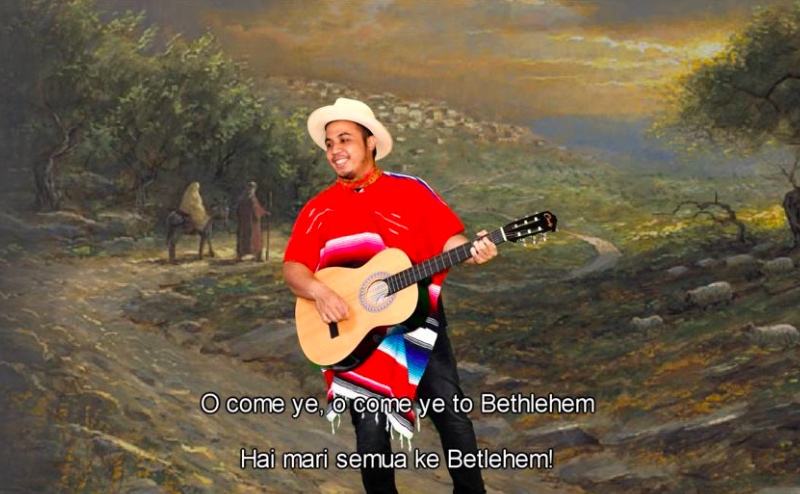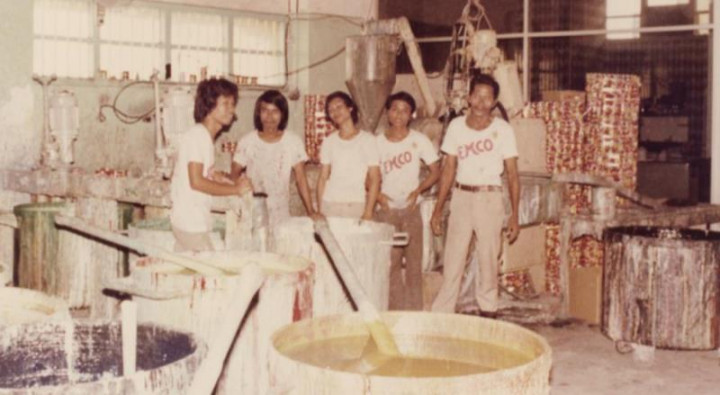What are those ‘3 Ps’? Here is a brief explanation of each of them:
1. Posadas
In Spanish means “The Inns”, and they are part of a religious festival which is celebrated in Mexico from December 16 to 24. In the posadas Mexican remember the hardships that Mary and Joseph endured during their trip to Bethlehem, in search of a safe place where Mary could give birth to baby Jesus.
The origin of the posadas dates back to the Aztecs’ time. They used to celebrate in December (month of Panquetzaliztli) the birth of Huitzilopochtli (God of War) with a festival that lasted 20 days in which they crowned their god by putting flags on fruit trees and banners in the main temple; this tradition was known as "flag raising".
The tradition of posadas arose with the arrival of the Spanish in Mexico in the 16th century, when the priests in charge of the evangelization of Mexico substituted the worship of the God of War for the European practice of preparing for Christmas, through the posadas.
2. Piñatas
This is what Mexican have in the posadas. The Pinatas are big star-shaped cardboard and clay figures. The Mexican catholic interpretation of the piñatas is the struggle of people against temptation. The seven peaks of the piñata represent the seven deadly sins.
The pot represents evil and the seasonal fruit and candies inside it the temptations of evil. The person with the stick is blindfolded to represent faith. The turning, singing and shouting represent the disorientation that temptation creates.
3. Pastorelas
Pastorelas are theatrical plays that recreate the passage of Mark’s gospel where shepherds follow the Star of Bethlehem to find the birthplace of baby Jesus, and on their way to that place, shepherds experience a series of challenges and confront the Devil, who will do everything to prevent them from completing their mission.
“While pastorelas have maintained the general premise of good vs. evil, the roles of what constitutes both the good and the evil have changed to encompass contemporary issues such as social and politics,” said Ambassador of Mexico to Indonesia H.E Armando Alvarez, in the Embassy statement receive by Medcom.id on Monday 21 December 2020.
“Nowadays, pastorelas are quite different from their first presentation hundreds of years ago. Years after the conquest of Mexico in 1521, the Franciscans tried to find ways to instruct the Aztecs and the rest of indigenous people the Catholic faith,” added Ambassador Alvarez.
“They realized that before the conquest, Tenochtitlan, the capital of the Aztec empire, offered entertainment with an art form that combined theatre, dance, and songs,” Alvarez said.
For the Aztecs, this form of art was deeper, and even a way to communicate with their gods. For that reason, it was natural for the Franciscans to use plays to evangelize indigenous peoples. Within a very short time, the indigenous people took over the entire production of the pastorelas.
Decoration are also important in any Christmas festive in Mexico. One of the main decorations of this season is the Poinsettia, which is a flower native from Mexico. Its name in Spanish is Nochebuena (Christmas Eve in English).
This flower was cultivated by the pre-Hispanic peoples long before the Christmas was celebrated in Mexico, and its name in náhualt was cuetlaxóchitl (flower that withers). Later, it was linked to the Catholic celebration of the birth of Jesus. Probably, the Franciscans who were settled in Taxco -,now the State of of Guerrero,- resumed the pre-Hispanic ceremonial use of the flower and introduced it in the celebration of Christmas, considering that the flower blooms at the end of the year, and in that way, they could continue with the evangelization of Mexico.
By 1825, the United States government appointed Joel R. Poinsett as its first extraordinary envoy and minister to Mexico. The diplomat and naturalist summoned amateur colleagues to make a collection of plants and animals, following the route of Alexander von Humboldt. It is believed that on that trip they found the poinsettia flowers in some ravines in Taxco and sent them to the United States.
“The flower took the name after the diplomat as poinsettia. Every December 8th we commemorate the National Day of the Nochebuena flower. It is cultivated in Mexico in the following States: Jalisco, Mexico City, Morelos, Michoacan, and Puebla, and its commercialization is between November and December of each year,” said Ambassador Alvarez.
Starting from December 22 at 19.00 WIB, Pastorel's Celebration can be enjoyed on the @EmbaMexIndonesia Facebook page which is fully supported by Diplomats from the Mexican Embassy.
Cek Berita dan Artikel yang lain di Google News



















